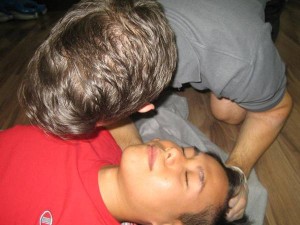Minor head wounds often bleed significantly due to the abundant blood vessels close to the skin surface in the face and scalp. Even though the amount of bleeding can be alarming, in most cases the injury is not severe and the bleeding stops with home treatment.
When to seek medical care
If a wound from a head injury is profound significantly to break through the skull, emergency care is required. Call for emergency assistance instantly.
Avoid placing pressure if:
- The skull appears deformed. The indications of deformity might include visible bone fragments, sunken areas or exposed brain.
- Injury involves the eye
If a wound from a head injury is profound significantly to break through the skull, emergency care is required. - A wound or cut is deep enough to penetrate the skull
How to control bleeding from head wounds
- Wash your hands properly using water and soap (if available)
- When treating the wound of another individual, wear latex gloves if available before applying pressure on head wounds. In case gloves are not on hand, utilize numerous layers of cloth or plastic bags in between the hand and the head wound. You can use your hands unprotected to apply pressure as the last resort.
- Assist the individual to a lying position.
- Get rid of any discernable objects from the wound. Do not try to cleanse out the wound.
- Firmly press on the wound using clean cloth, gauze or any cleanest material available. In case there is an object present in the wound that could not be removed. Place pressure around the object, not directly over it.
- Apply steady pressure for about 15 minutes. Avoid peeking after a few minutes to check if the bleeding has stopped. Once blood soaks through the cloth, place another one over the first.
- For moderate to substantial bleeding that could not be reduced or stopped, continue to apply direct pressure while getting help. Make sure to keep the wound unsoiled and prevent further injury to the area.
- For head wounds with mild bleeding, it usually stops on its own or slow to a trickle after 15 minutes of applying pressure.
- Monitor for any signs and shock which necessitates medical care.
More Information / Disclaimer
The information posted on this page on head wounds is for learning purposes only. Learn to recognize and manage head injuries including wounds by taking a standard first aid course with Toronto First Aid.

